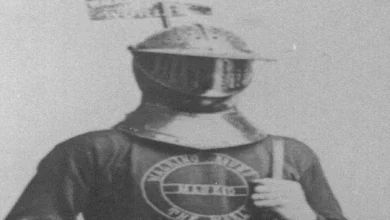A new “similar” to SARS-CoV-2 discovered in bats in England

A coronavirus similar to SARS-CoV-2 – the same one that caused the Covid-19 pandemic – has been discovered in bats in Europe, which have apparently harbored it for “several thousand years”. It seems, however, that this coronavirus is not capable of infecting humans unless it mutates. This is the first time such tests have been conducted on small British mammals.
The bat still remains one of the likely sources of the spread of the Covid-19 pandemic globally, the mammal being considered the natural reservoir of several coronaviruses, one of which could have mutated to become SARS-CoV-2. And one of the great “suspects” in this case, is the horseshoe bat.
“It is important to note that this new virus is unlikely to present a direct hazard to humans unless it mutates,” the University of East Anglia said in a statement, however.
Researchers at the university collected fecal samples from more than 50 horseshoe bats in several regions of Britain, the document said. Genome sequencing led to the discovery of a new coronavirus named by the team RhGB01. This is the first time a coronavirus related to SARS has been found in the UK and in a horseshoe bat.
‘Several thousand years’
This sequencing brings the new coronavirus closer to SARS: indeed, the S protein of RhGB01 is 77% identical to that of SARS-CoV-2 and 81% identical to that of SARS-CoV, finds a study published in the journal Scientific Reports.
“Horseshoe bats inhabit Europe, Africa, Asia, and Australia, and the ones we studied occupy the extreme western part of their range. Similar viruses have been found in other rhinolophid species in China, Southeast Asia, and Eastern Europe,” said Diana Bell, an expert on emerging zoonotic diseases and a professor at the university
This is the first time such tests have been conducted on small British mammals, she said. But “these bats will almost certainly have harbored this virus for a very long time – probably several thousand years,” she added.
Melting pot of mutations
Also, according to the press release, the new virus belongs to the subgroup that contains both the SARS-CoV-2 responsible for the current pandemic and the SARS-CoV that triggered the 2003 SARS epidemic.
“This British virus is not a threat to humans because the Receptor Binding Domain (RBD) – the part of the virus that attaches to host cells to infect them – is not compatible with the ability to infect human cells,” said Professor Andrew Cunningham of the Zoological Society of London.
However, the mammal hosting a SARS-like coronavirus can act “as a crucible for mutations of the virus”. “So if a bat infected with RhGB01 that we found was infected with SARS-CoV-2, there is a risk that these viruses could interact to allow a new virus to emerge… and infect humans,” he explained.
Diana Bell specified in this context that the main risks would be linked to those who take care of an animal collected by infecting it with SARS-CoV2, which would offer an opportunity for genetic recombination if it is already a carrier of another coronavirus.
“A time bomb”
A 2007 study of the 2002-2003 SARS epidemic concluded that: “The large numbers of Sars-CoV-like viruses in bats, as well as the culture of eating exotic mammals in southern China, is a time bomb.”
Another study, published in July 2001, explained that 75% of all emerging infectious diseases originate from zoonotic pathogens, that is, they are carried by a virus, bacteria, or parasites and are transmitted to humans by animals or insects.




